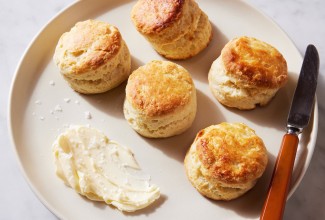For the flakiest flaky dough, you've gotta fold
Adding this quick step to your biscuits, pies, and scones will boost those buttery layers.
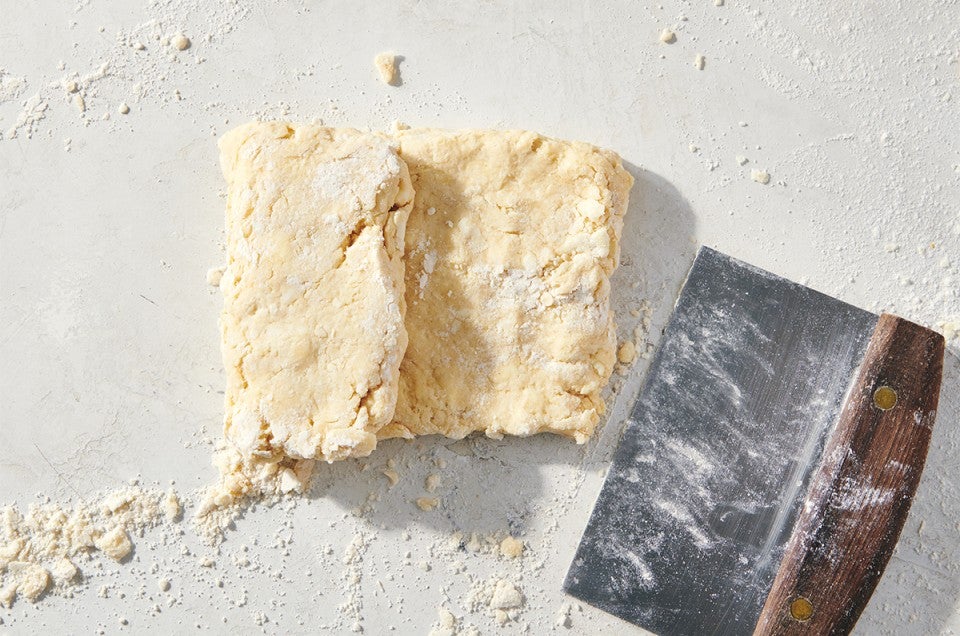

We go to great lengths to achieve flakiness in certain baked goods. We keep the butter in our pie crust ice cold. We handle our scone dough with the utmost care. We cut our biscuits with sharp cutters, not drinking glasses.
But baker and Savory Baking author Erin McDowell has another tip that not only maximizes flakiness, but actually increases it: She folds her doughs, and not just when she’s making puff pastry. “An instructor I had in pastry school introduced the concept very casually for pie dough once in class — and it seemed so obvious!” she recalls. “I started folding my go-to pie crust recipe and was so impressed with the results. I began doing it to other pastry doughs, like biscuits, not long after.”
(Heads up: At King Arthur, we only recommend the books that we, as bakers, truly love. When you buy through external links on our site, we may earn an affiliate commission.)
It makes sense when, as Erin explains, you think of folding like loose lamination. In traditional laminated pastries, such as puff pastry or croissants, a flour-and-water dough is wrapped around a pounded block of butter, then rolled out and folded over itself many times to create distinct layers of dough and butter. Once the dough is in the oven, the water in the butter evaporates, creating steam, which causes airy pockets to develop between each layer of dough and, in turn, a flaky pastry once fully baked.
Folding a biscuit or pie dough mimics this process. These doughs don’t have distinct layers of butter and dough, like puff pastry, but they do have large chunks of cold butter distributed throughout. When you fold the dough, these pieces of butter stack on top of each other, creating rough layers of butter and dough that translate to flakiness once baked.
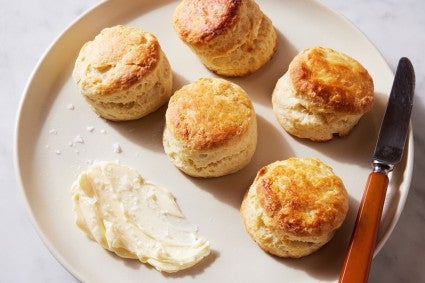
This folding method can be applied to any recipe that’s made with cold butter that you’d like to be flaky — think biscuits, pie crust, and scones. It will work in any dough recipe where cold butter is worked into flour but left in larger pieces, otherwise known as the cut-in method. Some biscuit and scone recipes, for instance, are made from heavy cream instead of cold butter (such as any biscuit referred to as a “drop biscuit”); they are meant to be soft and tender, rather than tall and flaky. These types of doughs would not benefit from a folding step.
Some recipes already include this step. Our Buttermilk Biscuit recipe, for example, instructs you to fold the dough before cutting into biscuits for additional layers. And Claire Saffitz’s All-Purpose Flaky Pastry Dough relies on two rounds of cutting, folding, and stacking to develop structure in the dough and create a noticeably flaky texture in the baked pie crust. The same cutting-and-stacking method is also used in these Layered Fig and Rosemary Cornmeal Scones.
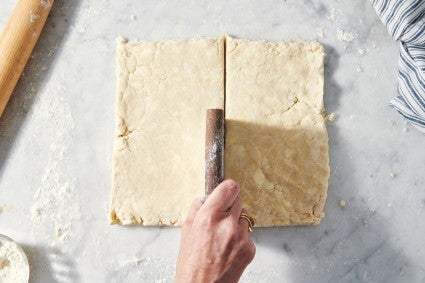
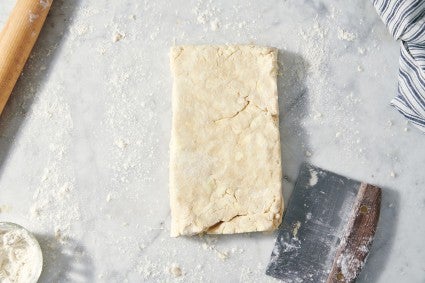
If the recipe doesn’t explicitly call for folding, you can add this step yourself. Once the dough has been formed but before you roll it out to shape and/or cut, gently pat it into a rough rectangle or square. It’s usually good for the dough to be shaggy and still a little floury at this point, as the folding will help it become more cohesive.
Fold the dough like a letter — bring one third across to cover the middle third, then fold the final third to cover that same section. Alternately, you can use a bench knife or another straight edge to cut the rectangle of dough into halves or thirds, then stack them on top of each other. One round of folding may be enough, but you can repeat this process one or two more times, if desired. Simply turn the dough 90° (quarter turn), pat the folded dough out into a rough rectangle or square once more, and fold again.
Folding in thirds is common, but it’s not the only way. Erin likes to fold her dough in quarters by folding the dough in half, then folding it in half again.
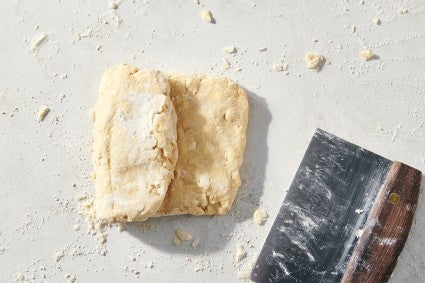
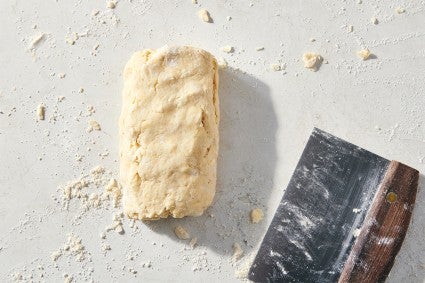
Understand that you can fold too much. The goal of most of these pastries is to not only be flaky, but also tender. Handling the dough too much can encourage gluten development, which in turn can make the baked good tough and dense. There’s a sweet spot between folding in more layers and overworking the dough — if the dough is becoming wet, gummy, tough, or elastic, avoid handling any further. To avoid those pitfalls, Erin also recommends chilling the dough before folding and between any subsequent folds (about 30 minutes, if you have the time). As she writes in Savory Baking, “The folding method works much better when the fat is cold and firm and the dough has had time to relax.”
As for how many times to fold, Erin advises, “For pie dough, I recommend just two to three folds. I call this my ‘extra flaky’ dough.” She adds, “When you get into four to six folds, you're more in rough puff pastry territory — a lot more visibly flaky.” As for biscuits, “any number of folds between one and four will make the dough lighter and flakier, and allow the biscuit to rise taller,” she advises. “It's not that you couldn't do more [folds], but it also isn't really necessary for impressively flaky results.”
Start by baking our recipes for Buttermilk Biscuits and All-Purpose Flaky Pastry Dough to see the difference folding can make, then branch out to try it in other recipes for lighter, flakier bakes — like these Buttery Sourdough Sandwich Biscuits, Easy Self-Rising Biscuits, or Scones. Like Erin, you may never look back.
Cover photo and food styling by Liz Neily.
